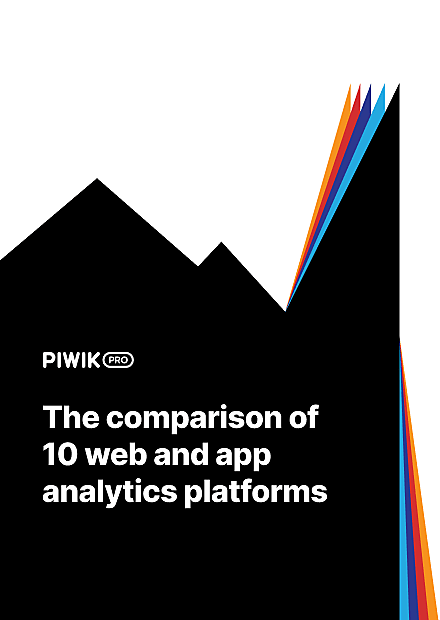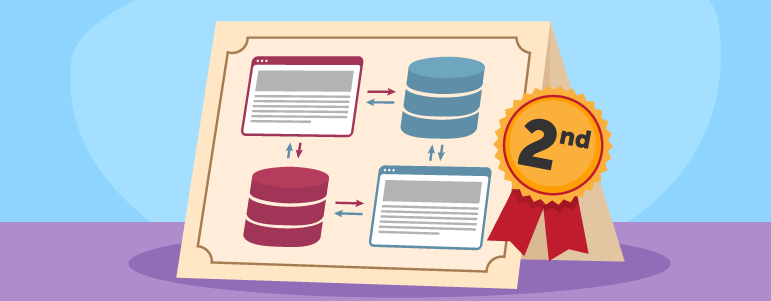No matter what your industry, you know that in the modern digital landscape data is the fuel powering your organization. It’s hard to imagine running a business without it. And while it comes in different shapes and sizes, first-party data takes center stage. This comes as no surprise when considering that it’s the most accurate, it juices up your marketing efforts and it keeps you in line with privacy regulations by default.
However, second-party data can deliver numerous benefits to marketers, like transparency, extended audiences and deep insights, to name a few. In this post we’ll discuss exactly what second-party data is and what advantages it can bring to your marketing strategy. Let’s get started!
What is second-party data?
Before diving into second-party data, it’s vital to refresh our memory about other data types. We’ll kick off with the concept of first-party data. This is information that you gather directly from users and customers, and you own it. You can collect it when they fill in contact forms, buy your products, talk to your sales team and so on. It guarantees accuracy and relevance, that’s why it’s so valuable.
To get the finer points on this stellar data, check out our posts:
And there’s also third-party data. You surely know what this is, since it’s the most popular type in the digital ecosystem. It offers the most scale, that’s why it’s one of the key elements of marketing tactics. However, that comes at the cost of transparency.
Third-party data is aggregated by an entity that has no direct relationship with customers. Also, it originates from multiple sources, and you can buy it on the open market. But it requires more work and diligence in terms of privacy and compliance if you want to make use of this data.
Finally, you’ve got second-party data, which your business partner collects directly from visitors and clients and then bartered for it or simply sold to you. This means that you didn’t obtain it directly from users, but you do know its source.
Second-party data is somewhere in between the other types of information we’ve described. It lacks the scale offered by third-party data, but it’s more privacy friendly. Most importantly, it allows you to gain knowledge and understanding you wouldn’t be able to acquire with only first-party pieces of the marketing puzzle.
To better understand the whole concept it’s best to imagine a real-life example. Consider the information customers provide when they book a hotel room. When guests submit consent, the hotel can enter into a partnership with a department store, allowing the store to promote a special offer after certain purchases.
Another second-party data example could be the keywords people enter into Google Ads search. And if you have an integration with the platform, you will get this information. Since it’s owned by Google, for you this would be 2nd party data.


COMPARISON
The comparison of 10 web and app analytics platforms
Learn the key differences between Piwik PRO Enterprise, Google Analytics 4, Matomo Cloud, Adobe Analytics, AT Internet, Countly Enterprise, Mixpanel Enterprise, Amplitude Enterprise, Snowplow Enterprise, and Heap Premier.
How can you obtain second-party data?
As we’ve mentioned, you can access second-party data by entering into a partnership with a company that owns data. There are two ways to do this.
The easiest way would be to turn to a business partner you already have a relationship with. But you can also find a new one on the open market. Some organizations even advertise themselves as sellers. Moreover, different non-competitive businesses that provide supplementary services and products to alike customer bases want to share data with other entities.
Instead of purchasing a third-party audience of snowboarding enthusiasts from some data aggregator, you could go straight to the publisher of a winter sports magazine to make a deal. There’s a strong chance that their readers are exactly the audience you want to reach. Then you can move right to the source and get data from a private marketplace.
Let’s say you sell designer clothes, so you could share your first-party data with a company that offers fashionable accessories. In this scenario each side possesses valuable information that can improve their ad targeting efforts. Keep in mind that it’s crucial to choose a reliable partner, one that guarantees high data quality and accuracy.
Once you make contact with an organization that holds the data you need, you can make the transaction. Both sides need to determine beforehand the scope of the deal, price and all other terms. And chances are that the seller will be able to provide some specific data points or audience.
As to data sellers, they can provide a list with private data records they hold, ready for monetization, collaborative campaigns or only for analytics purposes. If you need to acquire such information, you can easily browse through those lists and then reach out to the seller when you find the bits you’ll need for your marketing campaigns.
All in all, second-party listings come in handy, improve deals for clients and help marketers to find new opportunities on the data marketplace.
What are the benefits of using second-party data?
Now it’s time to dig a bit deeper into the advantages that come with inserting second-party data into your marketing efforts.
Transparency
First and foremost, you achieve much more transparency. This is because you buy data straight from businesses that gathered it themselves. You learn precisely how they collected it and how consent was given, unlike with third-party data – you can’t even be sure where it comes from.
For organizations with a “privacy first” approach, that’s a key differentiator. Compliance with GDPR requires you to know exactly where data comes from and how you obtained and use it. Second-party data helps you fulfill those obligations.
And GDPR has significantly changed they way organizations view this type of information. Considering the legal risks involved with applying third-party data, second-party seems to be a great alternative.
More accurate audiences
Given the small scale of first-party data, it’s no wonder companies seek out second-party data sources. It complements the information you collect on your customers and enables you to create more precise audiences.
That’s particularly beneficial if you want to aim for more niche audiences which you can’t reach because of the limits of your own database. You can look for a seller that owns highly specific information, collected under specific conditions.
It could be a segment of users with clearly defined demographic characteristics, interests, past purchases, and so on. And the more accurate your audience, the better the ad targeting of precisely customized content in your campaigns.
Expanding your business network
As we’ve said, while searching for a second-party data partner, not only can you enhance cooperation with an existing business partner, but also discover new ones. That gives you a better chance to build up your partnership network and uncover some fresh business opportunities.
Having a direct relationship with data sellers also makes the future search for data and purchases much easier. In the long run, it can speed up your processes and ensure better deals.
Where can you apply second-party data to improve your marketing tactics?
Now that you know how this data can raise your game, it’s time to put it into practice. Here are the key applications of second-party data as described by the experts from Lotame and LiveRamp.
Targeting new audiences
Equipped with a second-party database you’ll be able to reach new audiences. Suppose you run a travel agency, and you want to expand your audience in a new field. Then, you can, for instance, reach out to accommodation providers in the most popular flight destinations and buy or trade information on those customers.
Forecasting clients’ actions
Having 1st and 2nd party data together and wielding two data sources, you can better spot and analyze patterns in people’s actions, learn about their needs and preferences. In this way you can make exact predictions on customer behavior that will help you adjust your future marketing campaigns. All that will improve not only the reach of your ads and messages but also better fitting them into the context.
Getting a deeper understanding of buyers and users
The goal of acquiring second-party data is to add more details and nuances to what you already know about your clients and users. Since the majority of organizations can have access to the same third-party information, through partnerships with other brands and obtaining second-party data you can acquire the missing pieces of the puzzle about your visitors and shoppers. It also gives you a competitive edge since you get details others might not have.
Optimizing customer acquisition
Thanks to your existing brand cooperation you can discover new ways to improve customer acquisition. Through merging first and second-party data both you and your partner organization will be able to devise a sound joint strategy to reach each other’s customers and expand your base of new buyers or users.
Matching for measurement
When you complement first-party data with second-party data, you can connect all the bits of information on your users and customers across their whole journey. Whether it’s details from in-store interactions, buying transactions, CRM or analytics, you get the big picture. This allows you to better measure the effectiveness of your marketing campaigns.
Final thoughts
As you now realize, a lot of value can come from the application of second-party data. However, getting it can be demanding as it requires you to find the right partner, review both brands’ policies to ensure legal compliance, or implement security safeguards and operate in a privacy-conscious manner. Still, the effort pays off in the long run as you can better define your audiences, craft an excellent customer experience and ultimately increase your revenue.
You’ve learned a lot of crucial information, but there’s much more to know. If you got any questions about second-party data, don’t hesitate to reach out to us – we’ll be glad to address them right away. Just…











